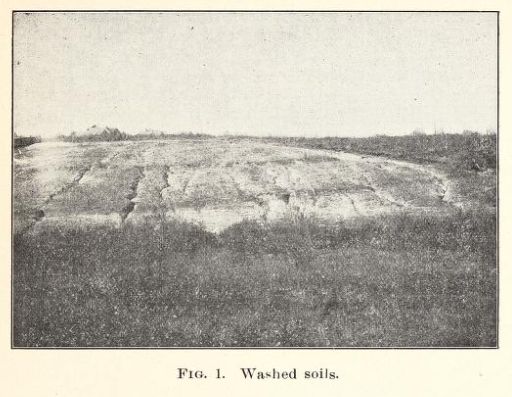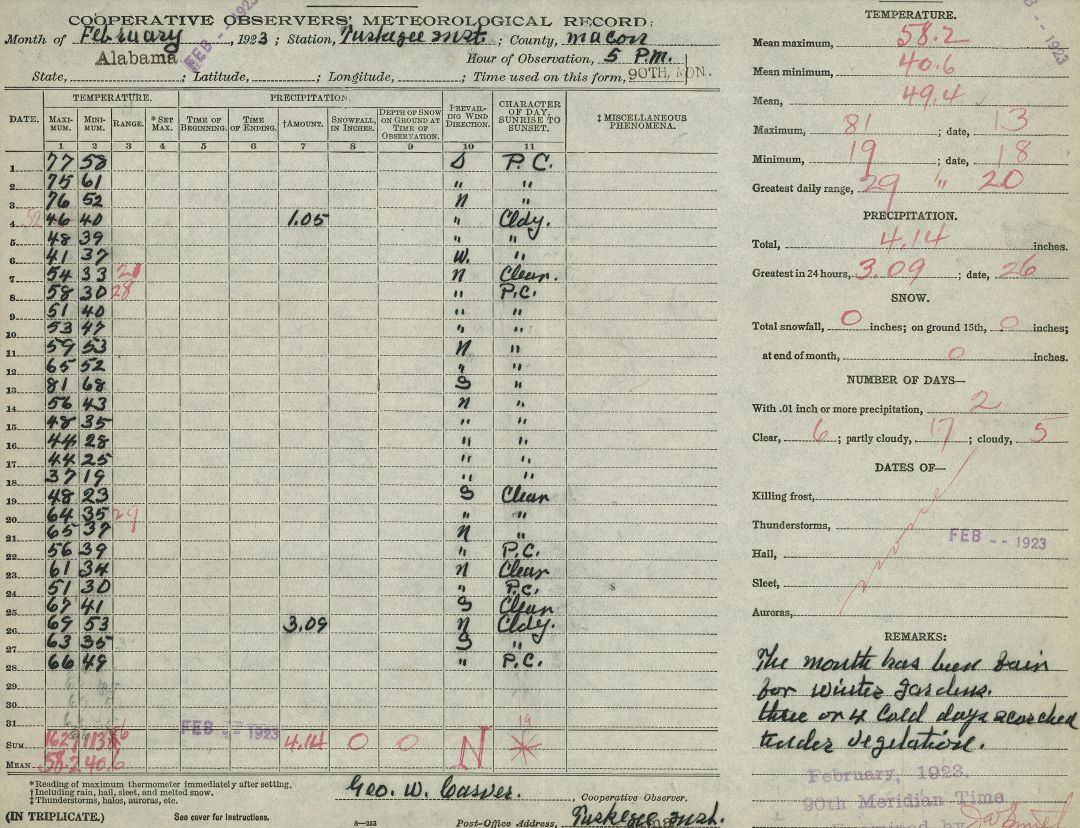Peanuts–that may be what George Washington Carver is best known for, but that was just one part of his work. Arguably more important? He was an advocate of sustainable agriculture before the concept even had such a name.
Carver was the first Black student admitted to the Iowa Agricultural College, now known as Iowa State University. He went on to be an educator and researcher at the Tuskegee Institute in Alabama from 1896 to 1943.
He even took weather observations there for over 30 years as part of a “cooperative observers” program, which the National Weather Service still uses today.
George Washington Carver’s daily weather reports for February 1923. (NOAA Central Library Data Imaging Project)
Carver knew the issues that Southern farmers faced. He encouraged efforts that went against the grain of agricultural science at the time, according to Mark D. Hersey, a historian at Mississippi State University. His efforts didn’t result in much change then, but he was certainly on to something.
“They were farseeing–and many of the things he called for became vital threads in what came to be known as the organic agriculture movement in the mid-20th century… in essence, Carver was a prophet of sustainable agriculture,” says Hersey.
Instead of growing only cotton, Carver recommended crop rotation that included peanuts so those crops could replenish the soil’s nutrients.
Carver’s holistic approach also encouraged composting manure, rather than simply adding chemical fertilizers. This was a cheaper solution that also made the soil more resistant to erosion, Hersey adds. The South gets deluges that drop a few inches of rain in a day, which can wash away the dirt and leave behind ruts.

Photograph of erosion in one of Carver’s bulletins, published in 1908. (Tuskegee Experiment Station Bulletin No. 11/U.S. Department of Agriculture, National Agricultural Library)
In one of the many bulletins he wrote, Carver noted some farmers’ belief that the moon influences the weather, along with other superstitions. He said to focus instead on actual conditions, since he knew seeds need some number of frost-free days and a certain soil temperature.
“My work is that of conservation,” Carver believed. We still hear echoes of that work a century later in sustainable farming.
Our team of meteorologists dives deep into the science of weather and breaks down timely weather data and information. To view more weather and climate stories, check out our weather blogs section.

